Easy Landing Case Studies
What To Expect From This Case Study
This is written by the founder of Easy Landing, Austin Pena 👋.
I was brought on by Develomark for some PPC consulting and in the process implemented Easy Landing for a number of their clients, but the one we’re going to talk about tonight is CT Moving and Storage.
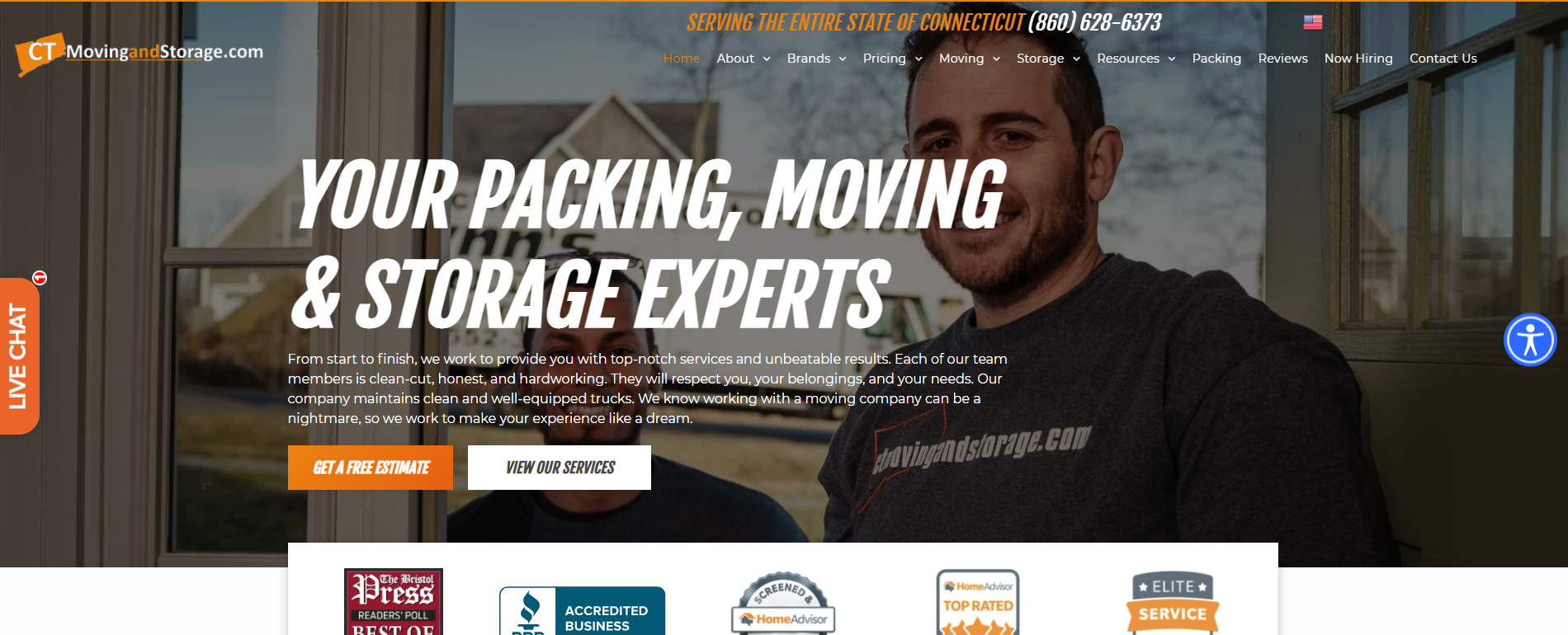
This case study is not a simple A/B test of implementing Easy Landing.
I did a lot more than add Easy Landing for this account, and I’m not here to convince you that the 45% drop in CPA was entirely due to Easy Landing. You will, however, see how Easy Landing saved tons of time and gave access to certain features not available with any other tool.
This is not another shallow case study. I hate those. In fact, it’s why it’s the only one here right now.
I don’t skip over the super boring details that drive campaign success. I embrace them.
What I’ll Cover
When I do ads training, here’s the hierarchy I use to dig into an ad account:
- Auction Insights
- Relevant Keywords
- Relevant Ads and Offer
- Google Analytics insights like conversion type and behavior flow
- Bid modifiers like tablet/ time of day/ gender etc
What We Got
The work I did in this account dropped CPA's by 45%. These results were generated from a Google Ads run experiment to ensure fairness.
Auction Insights: Why I Always Start Here
Auction insights set the tone for the rest of my audit and optimizations. As you can see here, while the top of page rate was pretty high, there were a ton of impressions left on the table.
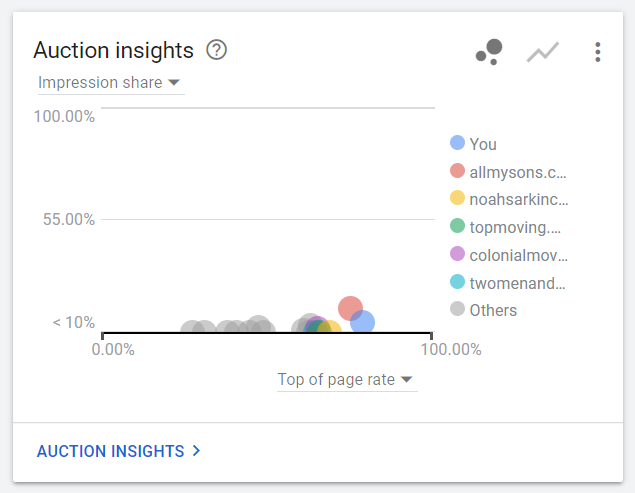
Now a Google Rep would look at this and drool over the fact that they could say their favorite line “Increase Your Budget”.
I see it differently. The fact that we’re at 10% impression share just means we can get 10x more specific with our traffic while maintaining spend.
This is a big driver of my success early on for campaigns.
If you can be picky about the traffic you get, especially when your budget is low. Do that!
Deal with scaling problems later.
Getting Relevant Keywords
This is really a two part process.
- Find the irrelevant keywords
- Find the relevant keywords
As of writing this, it’s still possible to see every user query in Google Analytics, whereas in Google Ads this was taken out. I used this to supplement my next tool.

The Ultimate Tool For Finding Keywords, Both Negative and Positive
N-Gram scripts are awesome, like, really awesome.
Below you can see that the phrase “moving and storage” showed up across 63 different search queries for a total of $2,200 spent, and an aggregated CPA of around $100.
Here is the script for running these yourself.

Example conclusions I took out of this analysis are that any queries that contain “how much” perform very poorly, and the phrase “companies near” was present in a lot of high performing search terms.
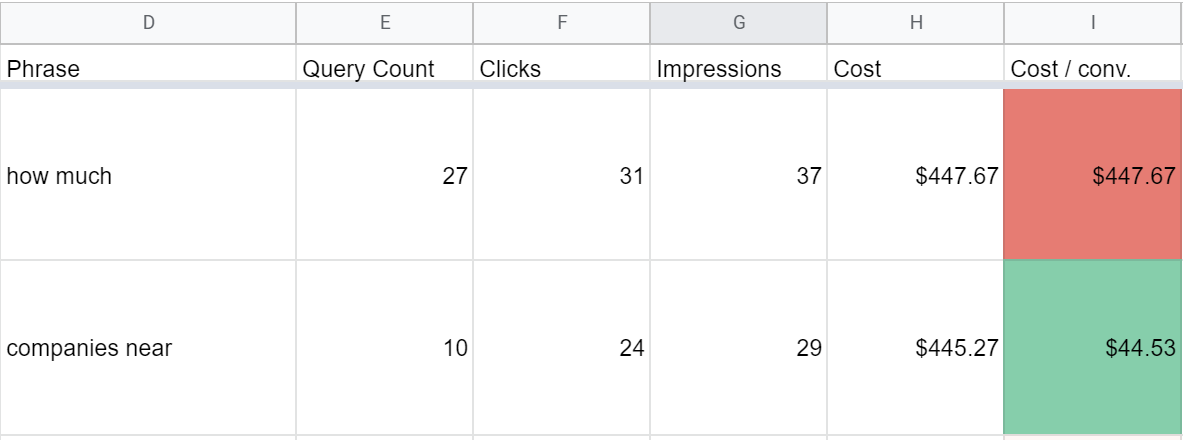
How I Build Negative Keyword Lists
After I build my negative keyword list, I separate them out into multiple negative keyword lists. The below screenshot is actually from a different account because it gives a better idea of what I do:
-
Bad Keywords
Words that somehow go through that are irrelevant to my client
-
Big list of proven bad keywords
A buddy gave this to me a few years ago. It has a lot of job searching type keywords in it and other negative keywords I apply to accounts by default
-
Competitors
All competitors go in here
-
Local
This campaign doesn’t service local customers, so we excluded them here
-
“non owner”
This one is applied to a single ad group where I was getting some not so nice phrase match overlap from Google’s “new and improved” way of handling phrase match
-
Price Shopping
Words like “cheapest” go in here
-
Questions
On this account the phrase “how to” showed up a handful of times and always performed poorly. That phrase and others are added here.
-
Relevant Low Performers
Sometimes in my gut I know that keywords probably should perform well, but for one reason or another, they don’t. I add those here.

Why go through the trouble?
Let’s say I want to experiment with really cheap traffic asking questions about my customer’s service, how would I do that with a single big keyword list? I’d have to manually comb through my keyword list or rely on a script that may or may not catch all the variations that I want to include.
With this, I can quickly turn off the list that would have been blocking me.
Or what if I started having issues with scaling months down the road, and can’t spend enough of my daily budget? At this point I could try to reintroduce keywords that I had once excluded in the “Relevant Low Performers” category.
The gist is, you get more control.
How I Build Ad Groups
To make it super basic, I have campaigns as a service, and then ad groups for modifiers. I use the keywords I find in the N Gram report, as well as some searching through Spyfu to determine how people search.
An example here is:
Campaign: Moving
Modifiers: Near Me, Company, Their City, Their State, Professional
Which could give searches like:
- Mover Near Me
- Moving Company
- Movers Southington
- Moving Company CT
- Professional Movers
This way when I build my ads, they’re not only covering that the user searched for “Moving”, but also the type of moving they’re after.
Someone searching for “Professional Movers” will always find an ad that says “Professional Movers” in it more relevant than one that just says “Moving Company”.
Your Click through rate will be higher and your quality score will go up.
PSSST. I know some of you disagree that the keyword should always be in the headline. I agree, it doesn’t always have to be there. However, I essentially always at least have a few headlines and ads where it is, and see how performance develops from there.
Using Easy Landing To Build Relevant Ads
What you just read about how more relevant ads give better results, the same exact concept applies to landing pages.
If someone searches Professional Movers they see an ad that says professional movers and end up on a landing page saying that you’re professional movers.
Not only will your ad relevance, landing page experience and quality score all go up, but your conversion rate will too.
Start With Your Message Testing
Easy Landing can provide some cool features, but there’s one last critical thing that I do before launching a campaign. Message testing.
Message testing is what drives CPA’s down month after month for the campaigns I manage.
Message testing, simply put, is coming up with as many advertising angles as possible, and experimenting which ones deliver the lowest cost per acquisition.
I won’t lie to you, I’ve read books and spent years and hundreds of thousands of dollars on ads going over how I come up with my advertising angles. I can’t tell you everything for how I do it, at least not in this case study.
To make a quick summary of how I reason about creating angles, I look at these two things:
-
What does a customer need to believe in order to become a conversion right now
This takes a look at things like if the prospect is already committed to hiring someone and is choosing between which one, or if they’re deciding whether they even need the service.
-
What benefits can I provide that cover pain points?
I know. This one is SUPER generic. I intentionally left it so because it can vary so wildly. Sometimes, I focus on pain points my client uniquely solves relative to competitors, and other times I focus on pain points that are brought from inaction (you can see how this ties back to point number one).
Again, I’m sorry it’s so generic, but hopefully it’s a decent starting point. If you want to dive deeper into this stuff, here’s a link to my favorite book on crafting messages, Breakthrough Advertising
The Message I Chose
I tested a handful of messages, but far and away the most successful one was a damage free moving guarantee.
Crazy good right?
This was not something the client had before me, but was something I recommended adding for the sake of the ad campaign, and it worked great.
How Messages Influenced Ad Copy
Messages influence ad copy in a very straight forward way.
The message already is relevant to the core service, so all that was left was tailoring it to the “modifier”.
Let’s look at an example for the keyword Long Distance Mover
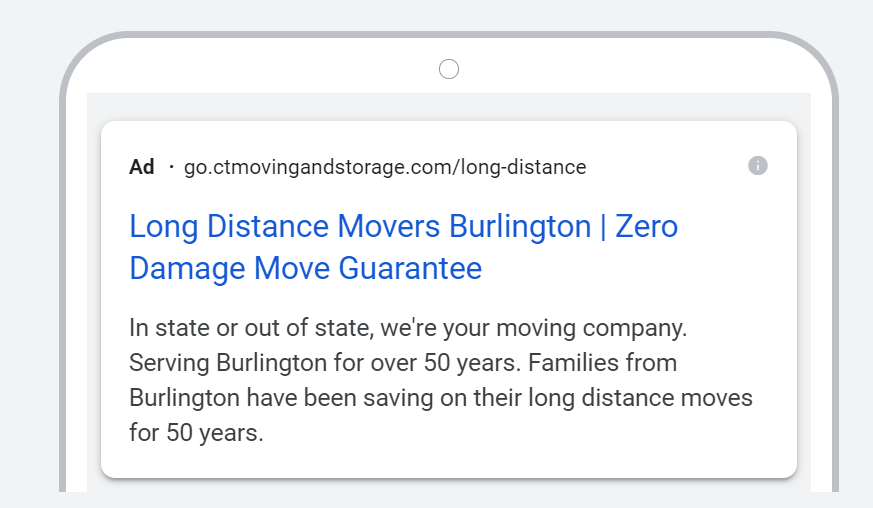
You can see here that the ad is immediately made relevant by including the keyword and the city the user is searching from. Next, our core message is used.
If you didn’t know, you can use a City insertion within Google Ads. It’s incredibly effective.

This Ad Group Got An 18% Click Through Rate
Building A Relevant Landing Page
So you’ve made it this far. I promised that this wouldn’t be focusing on some BS that Easy Landing did but instead would be a real case study with real actionable steps you could take?
We’ve finally gotten to using Easy Landing.
Here’s what the landing page looks like before modification:

Not too bad right? Clear, value based headline, three bullet points that go over the service, and a nice call to action.
It’s a bit busy and could definitely do with improvement like removing the top menu to name one, but it’s a good place to start. Plus I made this little guy:
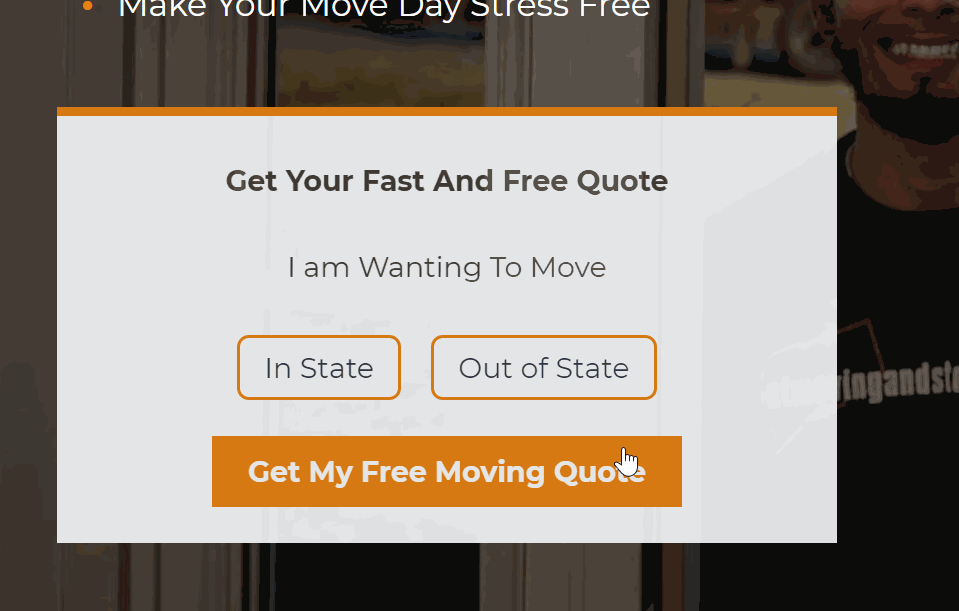
Psssst…. add a phone number after you collect your lead’s information. If they call in after they give their info they are much more likely to become customers.
Here’s what the top of the landing page looks like with Easy Landing
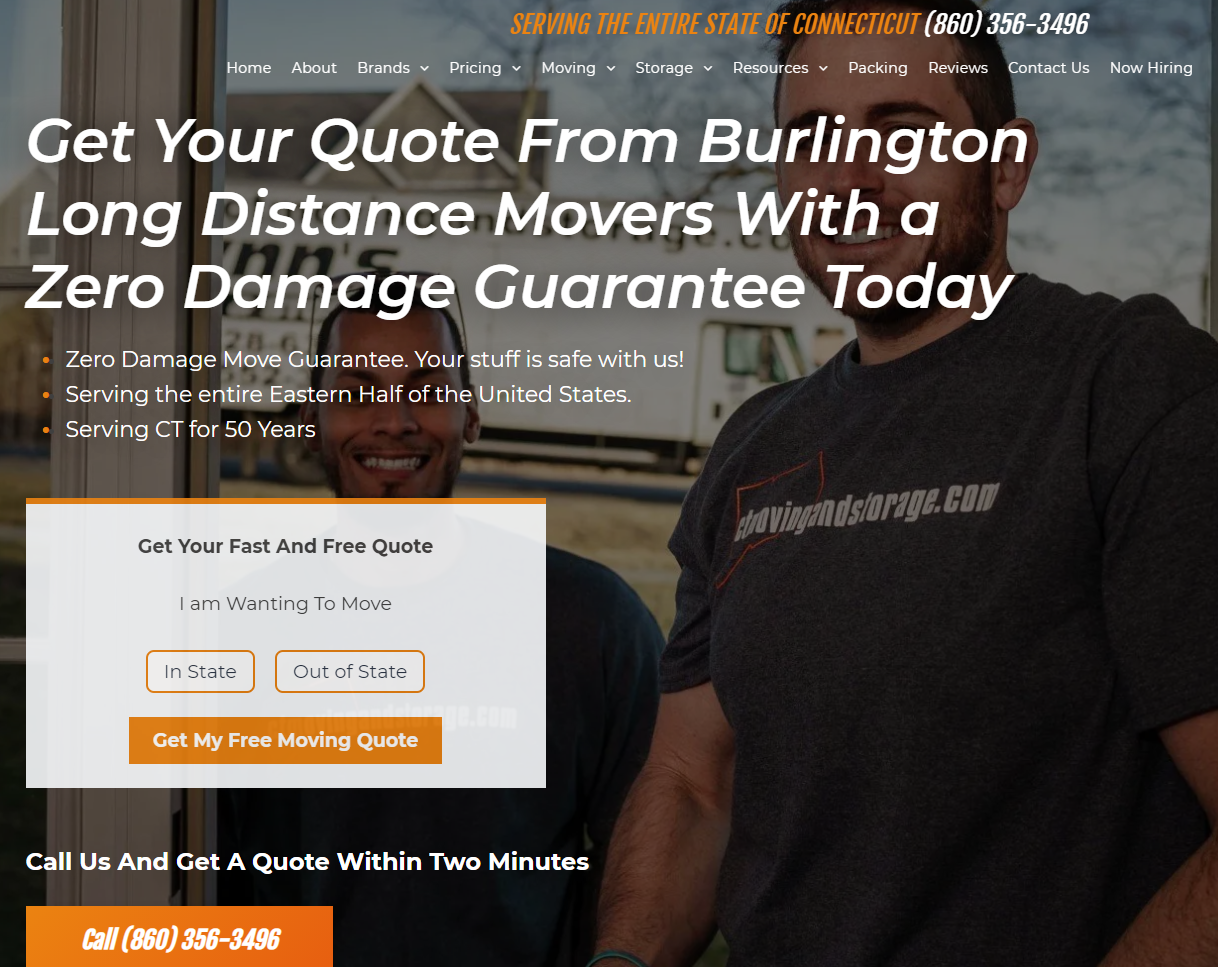
- We’ve got the service + modifier: Long Distance Moving
- We’ve got the city the user saw in the ad
- We’ve got the message the user saw in the ad
In Easy Landing, it’s as easy as adding the below line (or easier if you use the visual editor).

You can see a special keyword here called {{googleCity:CT}}. This means that if Google has the user’s location of interest or physical location, it gets inserted. If it doesn’t, the fallback CT (short for Connecticut) gets inserted.
This Is Why I Built Easy Landing
Yes, there are other features like server side A/B testing, image swap etc. At the core, Easy Landing lets you take a single page, and make it relevant for hundreds of different ads, offers, keywords, you name it.
The Really Boring Stuff
This stuff is really boring, so feel free to skip to the results if you want.
We’ve already covered:
- Auction insights
- Keywords
- Negative Keywords
- Ad Groups
- Messaging
- Ads
- Landing Pages
If you’ve run Google Ads before, you know that there’s a lot missing. That’s what this section is. I cover some Google Analytics audits, age breakdowns, device breakdowns etc.
This is not an exhaustive list, but the highlights of the most common breakdowns that I find across accounts.
A Word Of Caution, it’s very easy to draw wrong conclusions from limited data. For example you might see that the age group 18-24 performed 20% worse than your average over the last $1,000 spent. This may not be statistically significant.
This leaves you with two choices:
- Remove the poor performer even if you may be making the wrong decision
- Don’t remove the poor performer
If I’m starting a campaign far from maxing out my budget (like I talked about with auction insights), I’ll probably just cut them for the time being and re-add them as I need to scale and have a more optimized campaign.
If I’m running into scaling issues, I will want to be a lot more sure before removing a segment.
For this campaign, I was
Time Of Day
There are some very clear trends here.
Weekends suck for conversions, so I took them out.

Device
Did you guess that tablets suck? Because they do. I took them out but plan on re-adding them in the future if we run into scaling problems.
There’s also something else important to notice here, and it’s that mobile phones are outperforming desktops by a wide margin.

I don’t believe this is an problem with the device type, but rather a landing page issue.
Compare the desktop site:
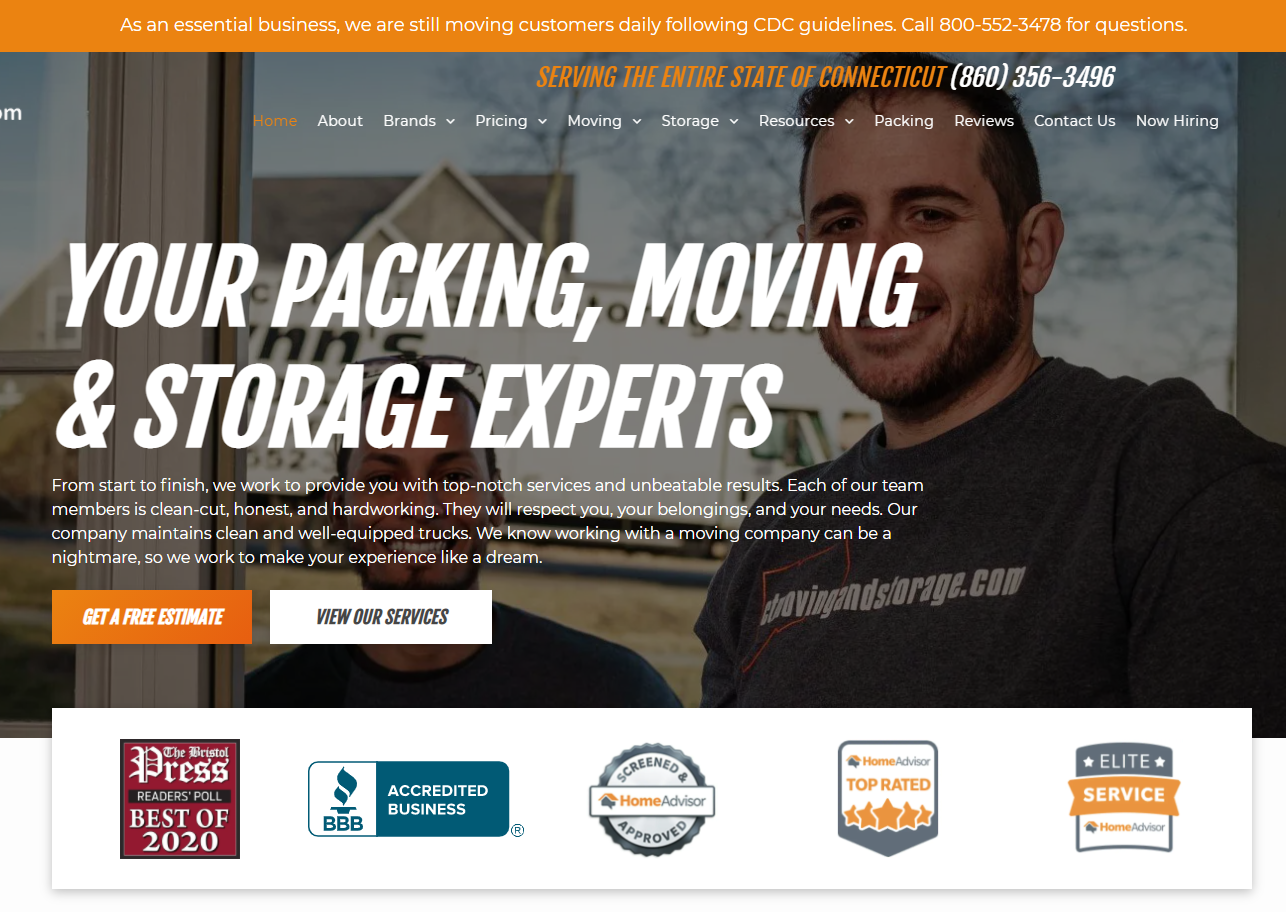
Vs the mobile site:
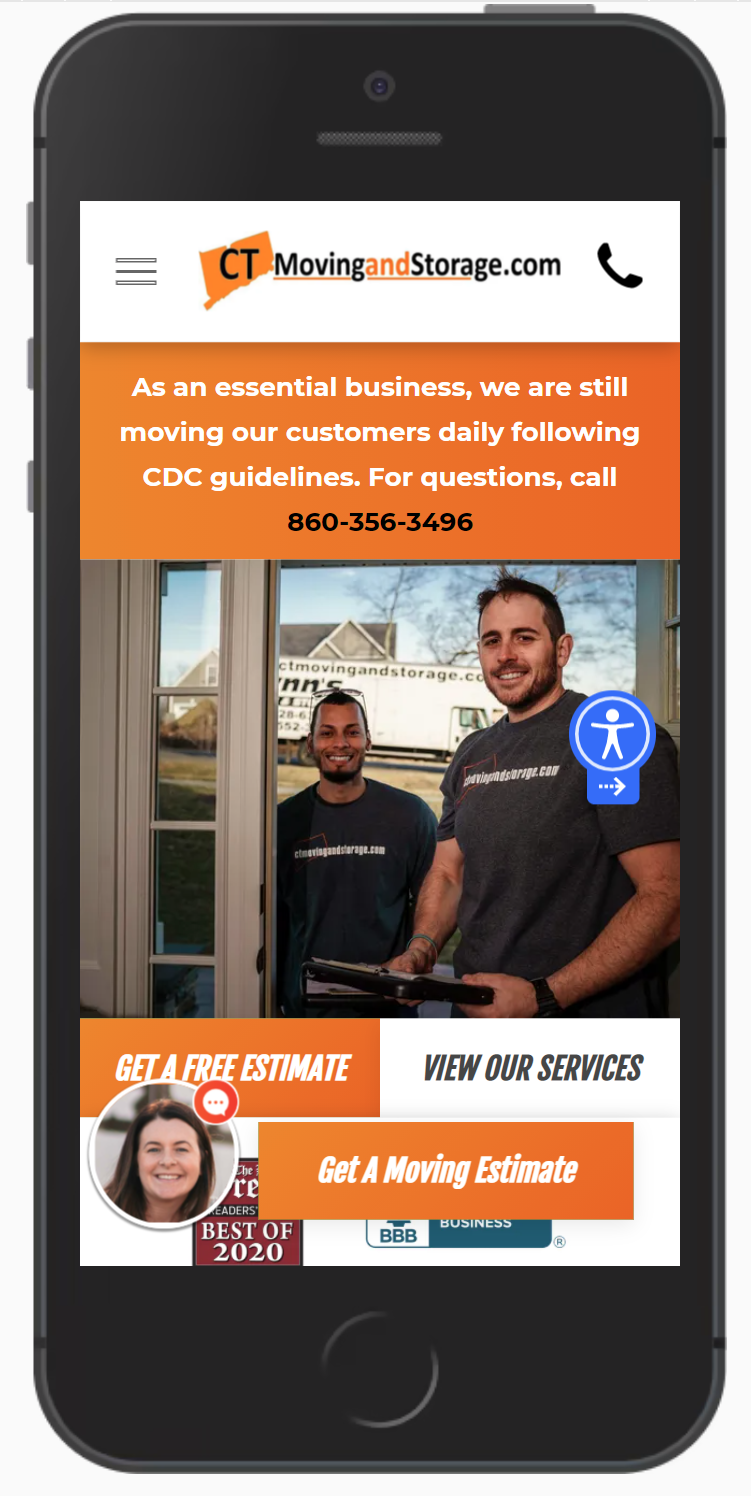
With the majority of conversion being click to call, it was clear that taking users to another page (which has a lengthy contact form) was hurting conversions.
This was supported by my investigation into the Behavior flow report from Google Analytics.
My Conclusion wasn’t to change the bid modifier for mobile vs desktop, but rather rework the landing pages a bit to make conversions easier.
Age
I wasn’t surprised that 18-24 year olds didn’t convert well, they don’t have homes. I cut them out and am not likely to re-add them.
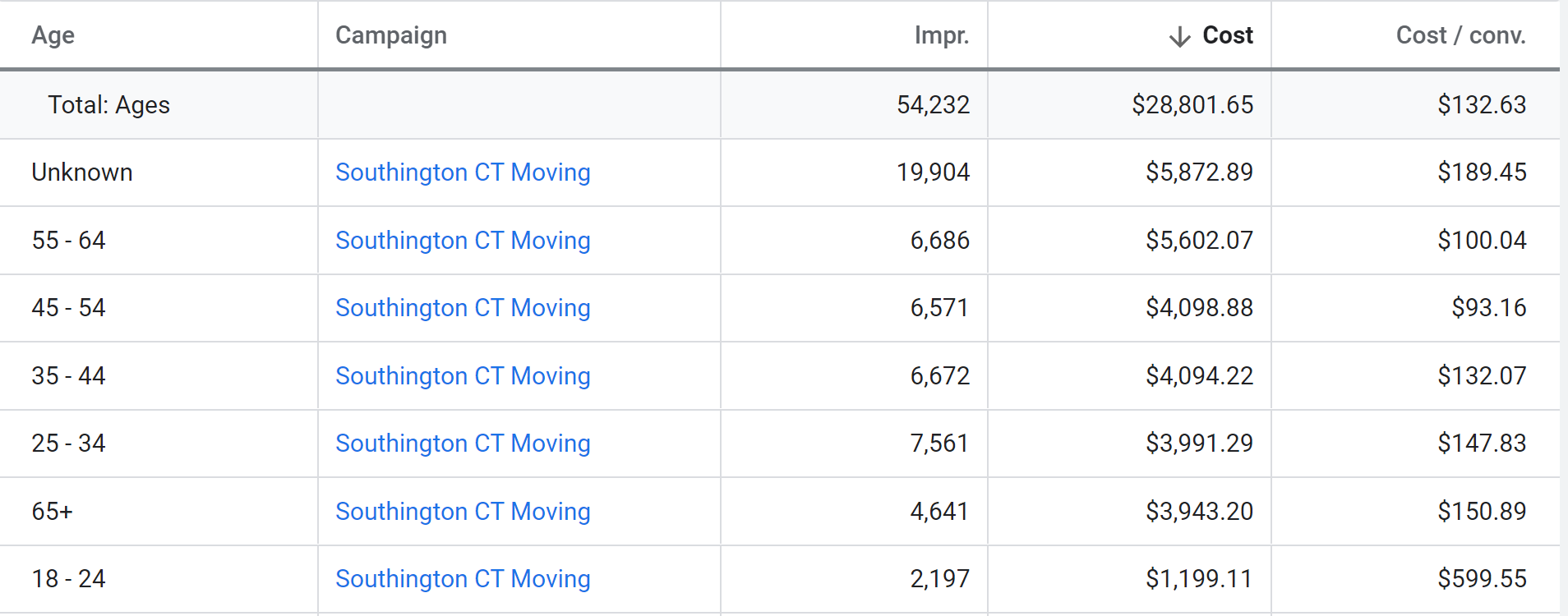
The Results
This case study only compared the first month of performance between the old campaign and new campaign. As you’d expect, the following month’s CPA’s dropped another 20%+, and keep dropping.
Comparing the old campaign to the new campaign in an Experiment:
Old Campaign: $135.77 CPA
New Campaign: $42.65 CPA